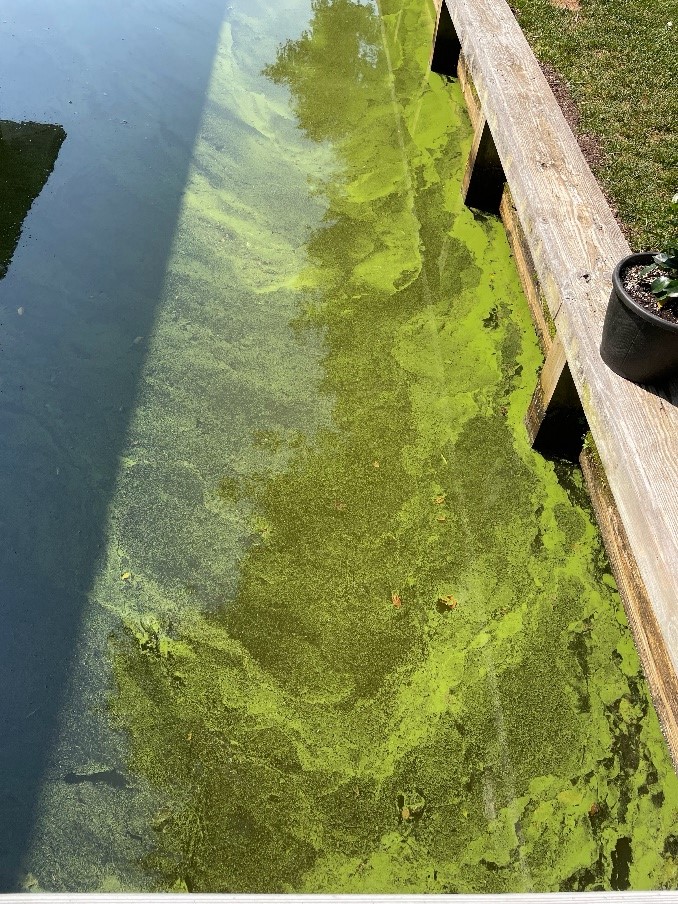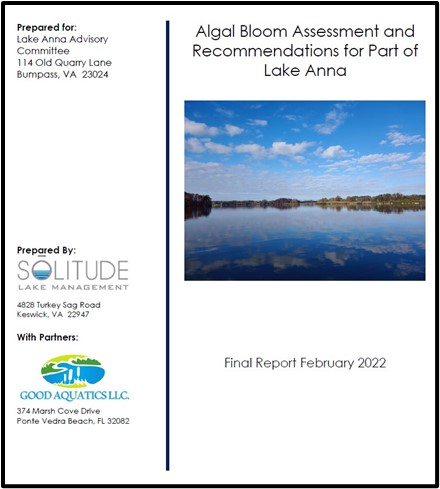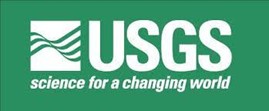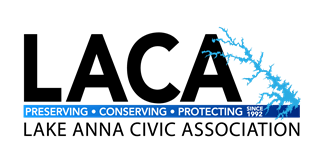By Harry Looney – July 2023
If you live in the upper part of the lake, north of the 208 bridge, you are most likely aware of, or have experienced, Harmful Algae Blooms (HAB) and the recreational “No Swim” advisories issued by the Virginia Department of Health (VDH). HABs are caused by cyanobacteria that live in the water along with a multitude of other plant and animal life.  There are many different species of cyanobacteria in Lake Anna and LACA has been working with the Virginia Department of Environmental Quality (DEQ) and VDH in monitoring these bacteria for the past four years.
There are many different species of cyanobacteria in Lake Anna and LACA has been working with the Virginia Department of Environmental Quality (DEQ) and VDH in monitoring these bacteria for the past four years.
There is a huge amount of research being conducted on cyanobacteria and HABs. Cyanobacteria live in both freshwater and in marine environments and the HABs that result from rapid growth of cyanobacteria have been documented for more than 60 years at locations around the world. So, if the problem is not new, and there is so much historical and ongoing research, why can’t we do something to eliminate it? Well, that is a question many people around Lake Anna have been asking for the past five years and one that LACA is working hard to address.
The bottom line is that cyanobacteria growth and HABs are a very complex problem with no “silver bullet” solution. Efforts to “fix” the problem in other locations around the United States have been expensive and positive effects are not achieved for years after the efforts are started. These large-scale efforts require federal and / or state money to implement due to the scope of the funding requirements alone.  Data from a recent study conducted on a portion of the upper part of the North Anna River branch asserts that it would conservatively cost $250 million to achieve a 30% reduction of nutrient levels that feed the cyanobacteria in that portion of the lake (click here to read the report). That area of the lake is only 20% of the approximately 4,400 acres of the lake north of the route 208 bridge. The price-tag to “fix” the problem is simply too high to even consider going down that path.
Data from a recent study conducted on a portion of the upper part of the North Anna River branch asserts that it would conservatively cost $250 million to achieve a 30% reduction of nutrient levels that feed the cyanobacteria in that portion of the lake (click here to read the report). That area of the lake is only 20% of the approximately 4,400 acres of the lake north of the route 208 bridge. The price-tag to “fix” the problem is simply too high to even consider going down that path.
Given the complexities and huge funding requirements, what can LACA do to improve conditions? Our research and work with several state agencies, many academic institutions, and industry partners led us to technologies that allow us to mitigate, not “fix”, the problem. These mitigation technologies are criticized by some as “band-aid” solutions. LACA agrees that the effects are only short-term, but something needs to be done to “stop the bleeding”. Our members do not want to just sit and wait for someone else to work this problem, so LACA is acting.
The objective of our Cyanobacteria Mitigation & Remediation (CMR) program is to control the problem, not to eradicate the cyanobacteria. We are using mitigation technologies that have 10-20 years of research, field testing, and use in similar environments to control the rapid growth of cyanobacteria to achieve and maintain an ecological balance of plant and animal life in the water. A common criticism of mitigation techniques is that they must be executed every year. This is true but effects are seen almost immediately, not in 5-10 years, and the cost to implement these technologies in small test areas is reasonable for an organization like LACA to undertake.
So, what are we doing in 2023? We are testing two different ultrasound technologies this year, continuing our investigations into algaecides, furthering our understanding of phosphorous remediation techniques, and continuing to monitor the upper lake area for water quality parameters and cyanobacteria concentration levels. It is a very comprehensive program requiring hundreds of volunteer hours from LACA members. You can read about ultrasound technologies and where we are implementing these technologies on our website at this link. Our experience in 2022 using algicides was positive so we are continuing our use of a hydrogen-peroxide-based algaecide in 2023 in the shallow portions of Goldmine Creek. Early test results indicate that the ultrasound and algaecide technologies are working as expected in Goldmine and Duckinhole Creeks. The history of heavy HABs on the upper portion of Pamunkey Creek combined with higher water flows and deeper water depths present a much tougher set of conditions for ultrasound technologies on that part of the lake. It is a significant challenge, but we are testing there to see what effects we can achieve with ultrasound technologies on open portions of the lake. We have seen two short periods (2-3 days) of bloom conditions in the test area but the ultrasound device appears to be able to “catch-up” with the exponential growth of cyanobacteria in that area and return lake conditions to what would be considered normal for this time of year. We will be monitoring conditions across the entire upper lake area throughout the remainder of the recreational season and we will publish a report at the end of the year on results for our 2023 testing.
 LACA is also furthering our understanding of nutrient levels (phosphorous and nitrogen) in the lake and the amounts entering the lake from the watershed to develop nutrient remediation concepts and projects for Lake Anna. This research is greatly enhanced by a 2-year, state-funded study on HABs. DEQ, and their partner, the United States Geological Survey (USGS), deployed five continuous monitoring stations in the watershed that provide data every 15 minutes to an online USGS water quality portal. You can view these data by going to this LACA webpageand clicking on the links for the 5 sites. There are three stations in the lake (2 on the North Anna and 1 on Pamunkey Creek) and two in the upstream tributaries (North Anna River and Pamunkey Creek). LACA is also conducting sediment sampling and analysis in 2023 to provide a current, comprehensive set of sediment data for the upper lake.
LACA is also furthering our understanding of nutrient levels (phosphorous and nitrogen) in the lake and the amounts entering the lake from the watershed to develop nutrient remediation concepts and projects for Lake Anna. This research is greatly enhanced by a 2-year, state-funded study on HABs. DEQ, and their partner, the United States Geological Survey (USGS), deployed five continuous monitoring stations in the watershed that provide data every 15 minutes to an online USGS water quality portal. You can view these data by going to this LACA webpageand clicking on the links for the 5 sites. There are three stations in the lake (2 on the North Anna and 1 on Pamunkey Creek) and two in the upstream tributaries (North Anna River and Pamunkey Creek). LACA is also conducting sediment sampling and analysis in 2023 to provide a current, comprehensive set of sediment data for the upper lake.  LACA is using these sediment data, and the data from the DEQ/USGS continuous monitoring stations, to inform research into a possible, future phosphorous remediation program to reduce the amount of phosphorous available to the cyanobacteria in the lake.
LACA is using these sediment data, and the data from the DEQ/USGS continuous monitoring stations, to inform research into a possible, future phosphorous remediation program to reduce the amount of phosphorous available to the cyanobacteria in the lake.
LACA will provide all our test data from 2022 and 2023 to the Virginia DEQ for their use in developing a larger-scale mitigation effort in future years. LACA estimates that a full-scale implementation of mitigation technologies in the upper lake area will take a minimum of $1 million per year. This is why LACA is working to achieve a line item in the state budget for HAB mitigation and remediation at Lake Anna and $1 million dollars in the state’s fiscal year 2024 budget amendment.
Our 2023 Cyanobacteria Mitigation & Remediation (CMR) program is a very comprehensive program requiring hundreds of volunteer hours from LACA members. We are out on the lake weekly, monitoring, sampling, and ensuring our mitigation devices are working properly. We update our website regularly so keep an eye on this page (https://www.lakeannavirginia.org/2023-CMR/) for those updates.
LACA would like to thank our generous donors and volunteers that make this effort possible. This is a civic activity that everyone involved, volunteers and donors alike, can and should be proud of. Go to the LACA website if you want to donate to these efforts and click on the DONATE NOW button. Please make sure that you select the “Kick the HAB … AGAIN!” program to ensure your donation goes to further this effort.
Please contact the LACA Program Manager if you want to get involved in our volunteer efforts or if you want to get more information on the CMR-2023 program.
harry.looney@lakeannavirginia.org
